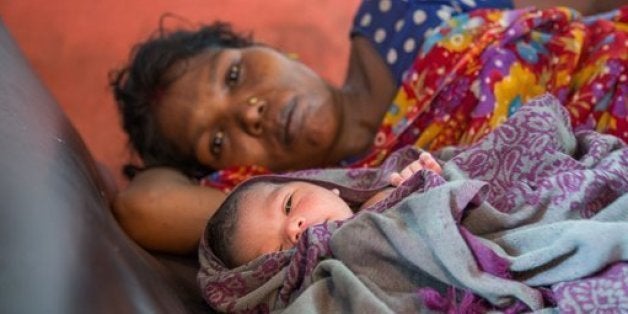
Every once in a while, a major innovation comes along -- one that has the potential to change the lives and health of families all over the world -- especially in remote, hard-to-reach areas.
For several years in the 1980s, I traveled the globe as a clinician (and later as a public health officer) to care for mothers and children in Africa, Asia and the Middle East. Each setting was different. But in each place, caring for pregnant women and newborns with complications was among the most difficult challenges my colleagues and I faced.
One of the most challenging conditions we dealt with was newborns suffering from bacterial infections. It remains a major public health challenge even now. In remote regions, most mothers delivered their babies at home without access to a skilled birth attendant and quality care. Babies would develop serious infections in the days and weeks following delivery, sometimes caused by unsanitary conditions during childbirth or an infection carried by the baby's mother. Most newborn deaths were caused by infections, and today, they still claim more than 629,000 newborn lives every year, accounting for a third of all newborn deaths.
The treatment for severe infection (sepsis) in newborns is well-established -- a total of 14 injections given over seven days, twice a day, by a doctor while the child is in the hospital. But often, in low-resource settings, newborns and their families lack access to health facilities due to financial or logistical challenges. They come to the hospital as a last resort, and often too late for treatment to be successful.
This week, The Lancet medical journal published a new study detailing a simplified treatment with antibiotics that is a true breakthrough in the global approach to neonatal infection. Researchers, aiming to identify an alternative way to deliver life-saving medicines, studied what would happen if the antibiotics were administered differently. The study found that two alternative simplified regimens, which require either two or seven injections, in addition to oral antibiotics given at home were just as effective as 14 injections in treating newborn infections. The regimens, studied in clinical settings in Africa and Asia where neonatal deaths remain stubbornly high, were found to be safe, simple and more accessible. The results show that when given proper instruction from health care providers, families were willing and able to care for their newborns with oral antibiotics at home.
This innovation could bend the curve in favor of neonatal survival. It could make a dent in saving some 300,000 newborns every year.
When mothers are healthy and when children thrive, the positive benefits last a lifetime. For families with sick newborns who cannot make it to a hospital, or for those who cannot stop working or need to be home for other children, it means more days at home instead of in the hospital. The costs of catastrophic illness, such as a week-long hospital treatment of a sick newborn, push many households below the poverty line.
Despite the tremendous gains in saving the lives of children globally, the rates of newborn deaths haven't fallen as quickly. The Every Newborn Action Plan released last year laid out a roadmap to end preventable newborn deaths. Today's Lancet study provides evidence that there is in fact an alternative to the arduous treatment currently used that would help the world reach this ambitious goal.
I often think of the babies whose lives couldn't -- and still cannot -- be saved because they lacked access to the treatment they needed. This simplified antibiotic treatment puts an alternative, less cumbersome course of treatment into the hands of front line health workers and families in the most remote areas of the world -- and will allow newborns to receive the lifesaving care they need and deserve.